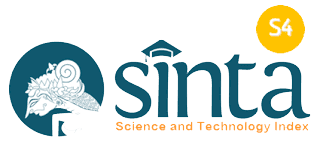Policy Implementation of Luwu Regional Library Development Policy
(1) Universitas Negeri Makassar, Indonesia.
(2) Universitas Negeri Makassar, Indonesia.
(3) Universitas Negeri Makassar, Indonesia.
(*) Corresponding Author
DOI: https://doi.org/10.26858/pdr.v5i2.31112
Abstract
This study aims to measure the implementation of regional library development service policies in Luwu Regency based on 4 indicators, namely: development and arrangement of library service systems, promotion of library services and promotions, development of future library services, and development of integrated service systems with libraries and information centers. This study uses a quantitative method with non-probability sampling technique that is exploratory, the determination of the sample is carried out by purposive sampling involving 194 respondents consisting of: Regional Librarians. Campus/School/Mosque Librarians, Community Reading Park Librarians (TBM), Village Library Librarians, Literacy Activists, and Library Visitors. The results showed that the development and arrangement of the library service system was in good category, namely 55%, service promotion and library promotion was in good category, 57%, future library service development was in good category, which was 52%, and the development of integrated service system with libraries and information centers was in the good category. good that is 56%.
Keywords
Full Text:
PDFReferences
Allington, R. L., McGill-Franzen, A., Camilli, G., Williams, L., Graff, J., Zeig, J., Zmach, C., & Nowak, R. (2010). Addressing summer reading setback among economically disadvantaged elementary students. Reading Psychology, 31(5), 411–427.
Altermatt, R., & Hilton, A. (2012). Hidden collections within hidden collections: Providing access to printed ephemera. The American Archivist, 75(1), 171–194.
Barner, K. (2011). The library is a growing organism: Ranganathan’s fifth law of library science and the academic library in the digital era. Library Philosophy and Practice, 1–9.
Benach, J. (2021). We must take advantage of this pandemic to make a radical social change: the coronavirus as a global health, inequality, and eco-social problem. International Journal of Health Services, 51(1), 50–54.
Bensman, S. J. (2012). The impact factor: Its place in Garfield’s thought, in science evaluation, and in library collection management. Scientometrics, 92(2), 263–275.
Coburn, C. E. (2016). What’s policy got to do with it? How the structure-agency debate can illuminate policy implementation. American Journal of Education, 122(3), 465–475.
Colahan, E. (2014). Classical guitar music in printed collections: A new index and a model for indexing instrumental music in score collections. Music Reference Services Quarterly, 17(3), 115–124.
Datnow, A., & Park, V. (2012). Conceptualizing policy implementation: Large-scale reform in an era of complexity. In Handbook of education policy research (pp. 364–377). Routledge.
Doiron, R. (2011). Using e-books and e-readers to promote reading in school libraries: Lessons from the field. IFLA Conference, 13–18.
Graves, M. F. (2016). The vocabulary book: Learning and instruction. Teachers College Press.
Kaur, R., & Gaur, R. (2017). Collection development in academic libraries with special reference to digital era. International Journal of Digital Library Services, 7(2), 107–114.
Kotzebue, J. R., Bressers, H. T. A., & Yousif, C. (2010). Spatial misfits in a multi-level renewable energy policy implementation process on the Small Island State of Malta. Energy Policy, 38(10), 5967–5976.
Manolova, T. S., Brush, C. G., Edelman, L. F., & Elam, A. (2020). <? covid19?> Pivoting to stay the course: How women entrepreneurs take advantage of opportunities created by the COVID-19 pandemic. International Small Business Journal, 38(6), 481–491.
Nawir, R., Maulana, R., Nuryamin, M., & Husain, T. (2018). Implementation Program of Poor Rice Copyright. The International Conference On Social Sciences And Humanities.
Phillips, J. J. (2012). Return on investment in training and performance improvement programs. Routledge.
Raju, J. (2014). Knowledge and skills for the digital era academic library. The Journal of Academic Librarianship, 40(2), 163–170.
Sivathaasan, N. (2013). Impact of library collections on user satisfaction: A case study. Marketing, 34, 16–18.
Söderholm, J., & Nolin, J. (2015). Collections redux: the public library as a place of community borrowing. The Library Quarterly, 85(3), 244–260.
Sweeney, M. (2010). Reading is my window: Books and the art of reading in women’s prisons. Univ of North Carolina Press.
Syamsiar, S., Saggaf, M. S., Salam, R., & Ihsan, S. R. (2018). Implementation Of Supervision On Office Of Community Empowerment And Makassar City Village.
Will, L. (2012). Requirements for Operations to Take Advantage of the Flexibility of SOA. Computer Science and Engineering, 2(5), 68–76.
Wilson, S., & McCarthy, G. (2010). The mobile university: from the library to the campus. Reference Services Review.
Article Metrics
Abstract view : 145 times | PDF view : 27 timesRefbacks
- There are currently no refbacks.
Copyright (c) 2022 Nasiratunnisaa Mallappiang, Andi Agustang, Andi Muhammad Idkhan


































